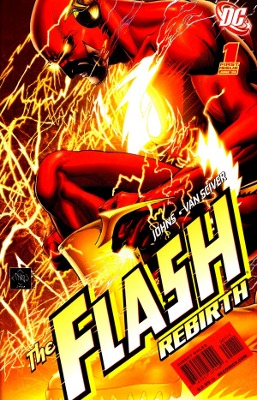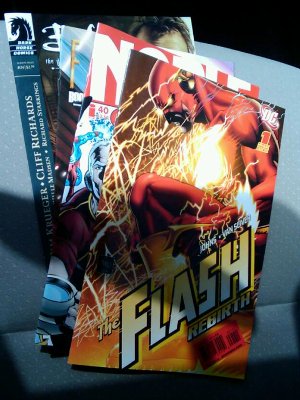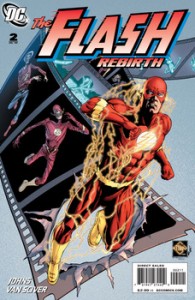 I’ll post a more complete review after I’ve had a chance to get home, re-read the first issue, and read through this one again, [Edit: it’s up now] but here are my first thoughts on Geoff Johns and Ethan Van Sciver’s Flash: Rebirth #2.
I’ll post a more complete review after I’ve had a chance to get home, re-read the first issue, and read through this one again, [Edit: it’s up now] but here are my first thoughts on Geoff Johns and Ethan Van Sciver’s Flash: Rebirth #2.
Things I liked
Good mix of flashback and mystery.
The simple solution to explain why civilian Barry Allen is back, and where he’s been all this time.
Follow-through on both Savitar and Black Flash — the story’s starting to get going.
Nice to see some familiar faces like Patty Spivot, Barry’s lab assistant. That makes me wonder where she is now, and whether she’s ever met Angela Margolin, who had Barry’s former job during Chain Lightning and the Dark Flash Saga.
Sam Scudder’s green-and-orange striped tie from his pre-Mirror Master days.
During a fight, Wally’s costume is ripped in such a way as to suggest Walter West‘s “Dark Flash” costume.
Another mention of Max Mercury (remember, he co-stars in the Mercury Falling collection that also came out today!)
The Gorilla City paintings as a narrative tie.
Things I didn’t like
I can see where he’s going with the new backstory introduced last issue, but I still don’t like it much. Is retfridge a word? Or retro-fridge?
Was it really necessary to take a page and a half to do the Secret Origin of Barry Allen’s Bow Tie? Honestly, I’d have just ignored it the way modern Superman ignores the fact that Clark Kent used to wear a hat.
On one hand it’s a cop-out to bring back missing characters just long enough to kill them. On the other…I guess it’s better than killing off active ones. And it’s not as if death is (usually) permanent in comics anyway.
Also
The last page ends on a cliffhanger. On one hand, it’s shocking in the “how will they get out of this?” sense. As far as revelations go, it’s only surprising in the sense of, “Really? They actually went there?”
Initial Verdict: Good, could be better.
Stay tuned for my full review later today. Update: My full review is up.

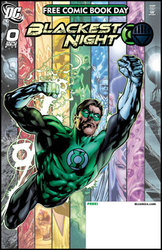 I made it out to one of my local comic stores on Saturday for
I made it out to one of my local comic stores on Saturday for 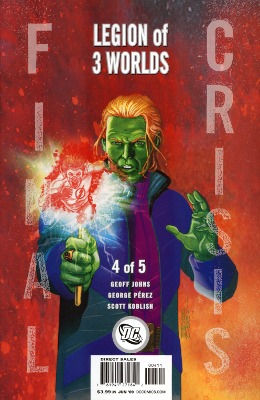
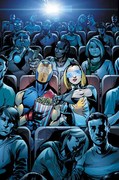 Jay Faerber, Mahmud A. Asrar, Yildiray Cinar, Ron Riley.
Jay Faerber, Mahmud A. Asrar, Yildiray Cinar, Ron Riley.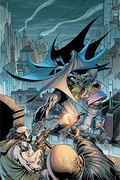 Neil Gaiman and Andy Kubert
Neil Gaiman and Andy Kubert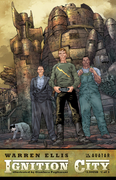 Warren Ellis and Gianluca Pagliarani
Warren Ellis and Gianluca Pagliarani